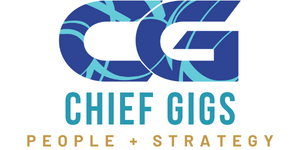Let’s be real: the world feels shaky.
In conversations with clients, in casual check-ins with team members, even in line at the grocery store, I’m hearing the same undercurrent: people are stretched. Not just stretched in time or resources—but emotionally, mentally, even spiritually.
Instability doesn’t just live on newsfeeds—it creeps into our daily lives in ways that are harder to quantify. Rising food costs. Shifting tariffs. A looming sense of economic unpredictability. These are not abstract concepts. They’re line items in a household budget. They’re quiet moments of panic while looking at a receipt. They’re decisions to put off childcare, skip a vacation, or delay a dental appointment.
It’s true. Instability is reshaping not just how we live—but how we work. It’s not just that people are tired. It’s that they’re carrying a psychological load that has no off switch.
“Everyone’s anxious, and it’s bleeding into everything we do.”
What Psychological Load Looks Like at Work
People may not name it as anxiety. They might not use the word “instability.” But it’s showing up in very real ways:
- A team member who’s usually sharp now seems scattered and forgetful
- A manager who’s constantly in meetings but rarely present
- The high performer who suddenly stops contributing in brainstorms
- Increased absenteeism, even among the most reliable people
- Hesitation around planning anything long-term
- A pervasive sense of “What’s the point?”
This is what happens when people are in a constant low-level fight-or-flight state. It wears them down, erodes focus, and makes everything feel heavier than it should.
Leaders are feeling it too. Trying to offer steadiness while navigating their own inner turmoil is no small ask.
The disorientation isn’t limited to individuals. We’re also seeing entire organizations lose their bearings. Some are pivoting so often that employees no longer trust any direction. Others are holding tight to old strategies in a world that’s moved on.
Take Southwest Airlines—a beloved brand known for its scrappy culture and customer-first approach. For years, they stood apart from the rest of the industry. But post-pandemic, they’ve faced repeated technical failures, labor tensions, and strategic confusion. Internally, teams say communication is fractured. Externally, passengers are feeling the change. The company that once seemed certain—clear in its purpose and values—suddenly seems rudderless.
And they’re not alone. I’ve been hearing similar stories from leaders across industries:
- Vision is fuzzy.
- Priorities shift weekly.
- Long-term planning feels like a gamble.
It’s hard to lead with confidence when you’re not sure what’s around the corner.
What Do We Do With All This?
You can’t fix inflation. You can’t rewrite policy. You can’t calm geopolitical tensions.
But you can offer an anchoring presence.
The best leaders I know aren’t trying to provide perfect answers—they’re trying to provide clarity, humanity, and consistency. Here’s how:
- Name What’s Real
Pretending everything’s fine doesn’t help. Name the uncertainty. Normalize the stress. When you show that it’s okay to be impacted, people can exhale.
- Reconnect to Purpose
When strategy is shaky, purpose is your ground. Reaffirm what your organization exists to do and who you serve. Get back to the “why” that doesn’t change.
- Communicate Often—Even When It’s Messy
In times of ambiguity, silence is louder than you think. Even a simple “Here’s what we know, and here’s what we don’t” builds trust.
- Give People Room to Be Human
Maybe it’s mental health days. Maybe it’s flexible work hours. Maybe it’s just asking, “What’s heavy for you right now?” The most strategic thing you can do might just be to listen.
This Isn’t About Heroism—It’s About Humanness
Strong leadership doesn’t mean stoic leadership. It means showing up grounded, present, and willing to meet people where they are.
Because in a world that feels increasingly unpredictable, your team doesn’t need you to be perfect—they need you to be real.
So if the sea is rough, don’t reach for the wheel alone. Bring your people in, check the compass together, and move forward—anchored in purpose, even if the path isn’t clear.
Download this resource to help make those conversations easier: Leadership Anchors in Uncertain Times


Well said. Insightful, regardless of the type of organization (for-profit, non-profit, volunteer)a person is engaged with.
Thank you for reading!